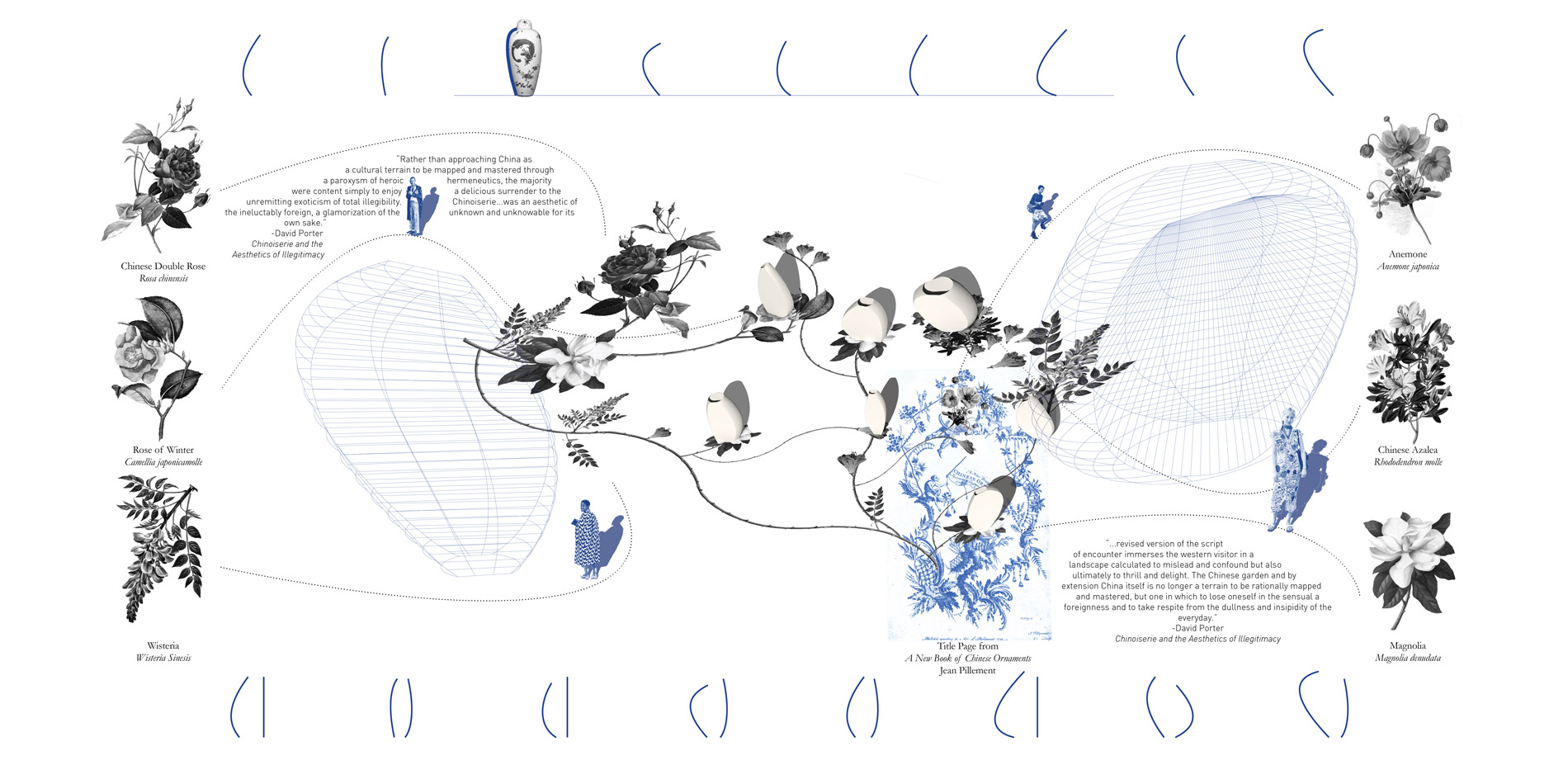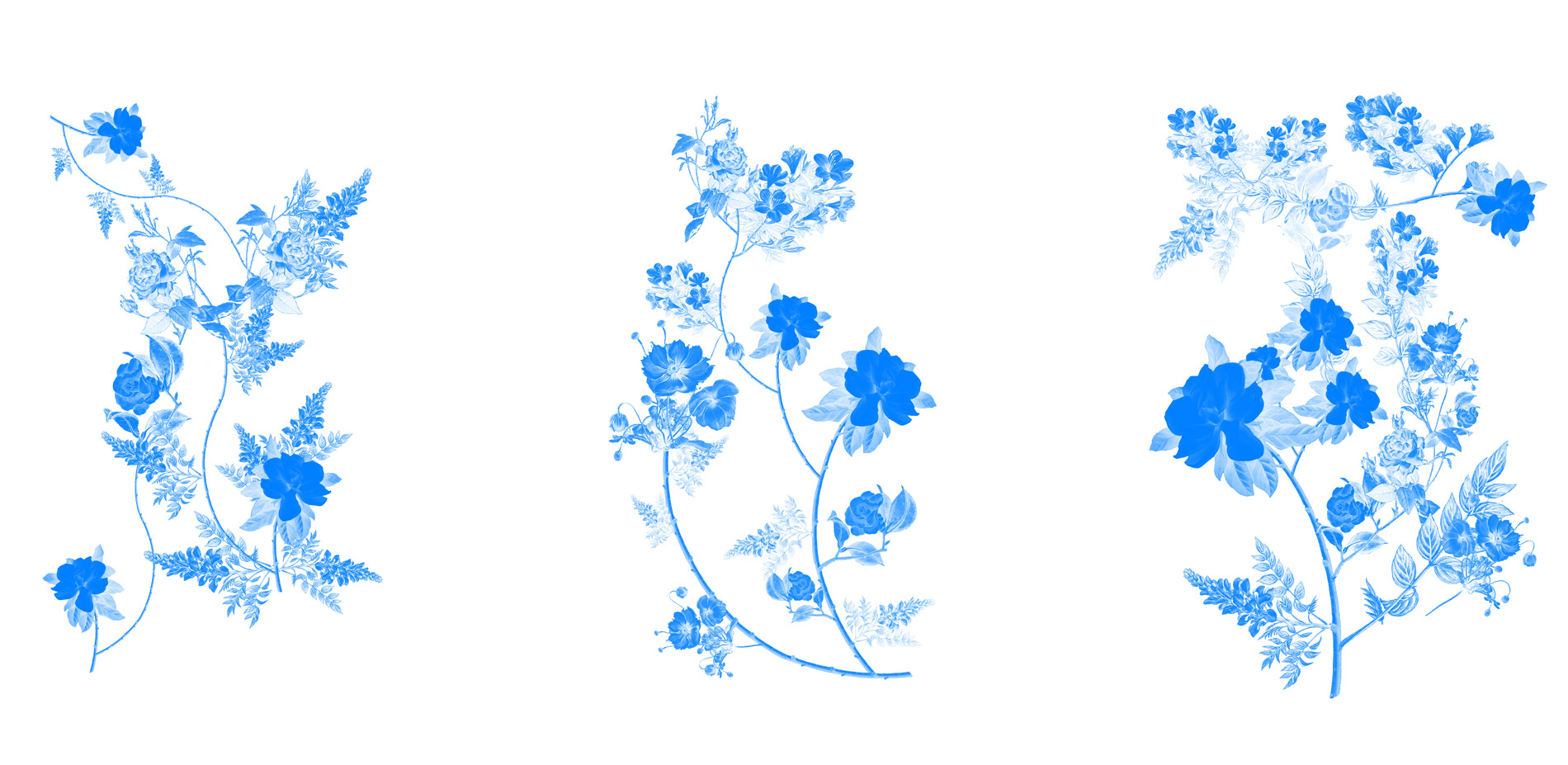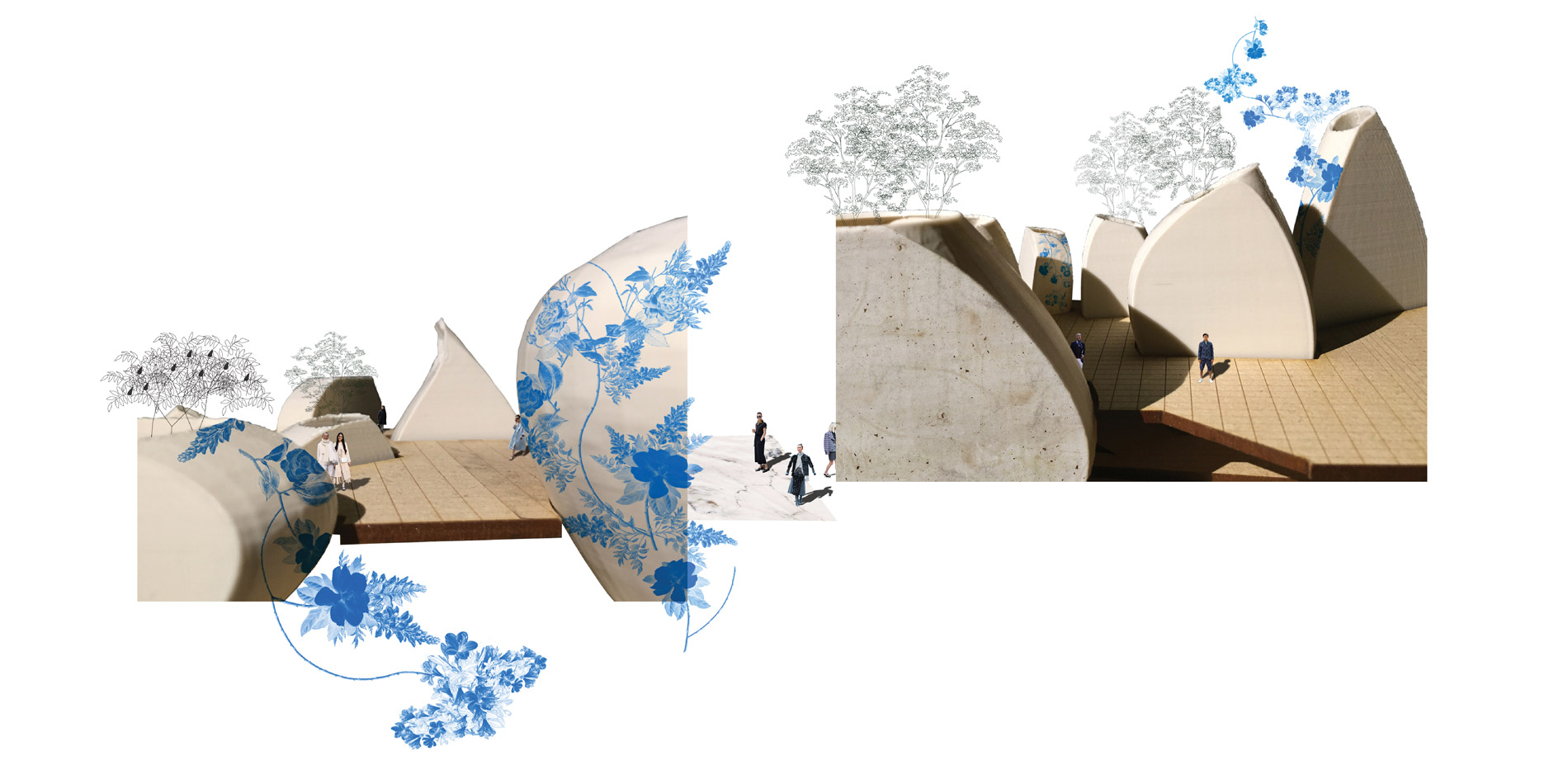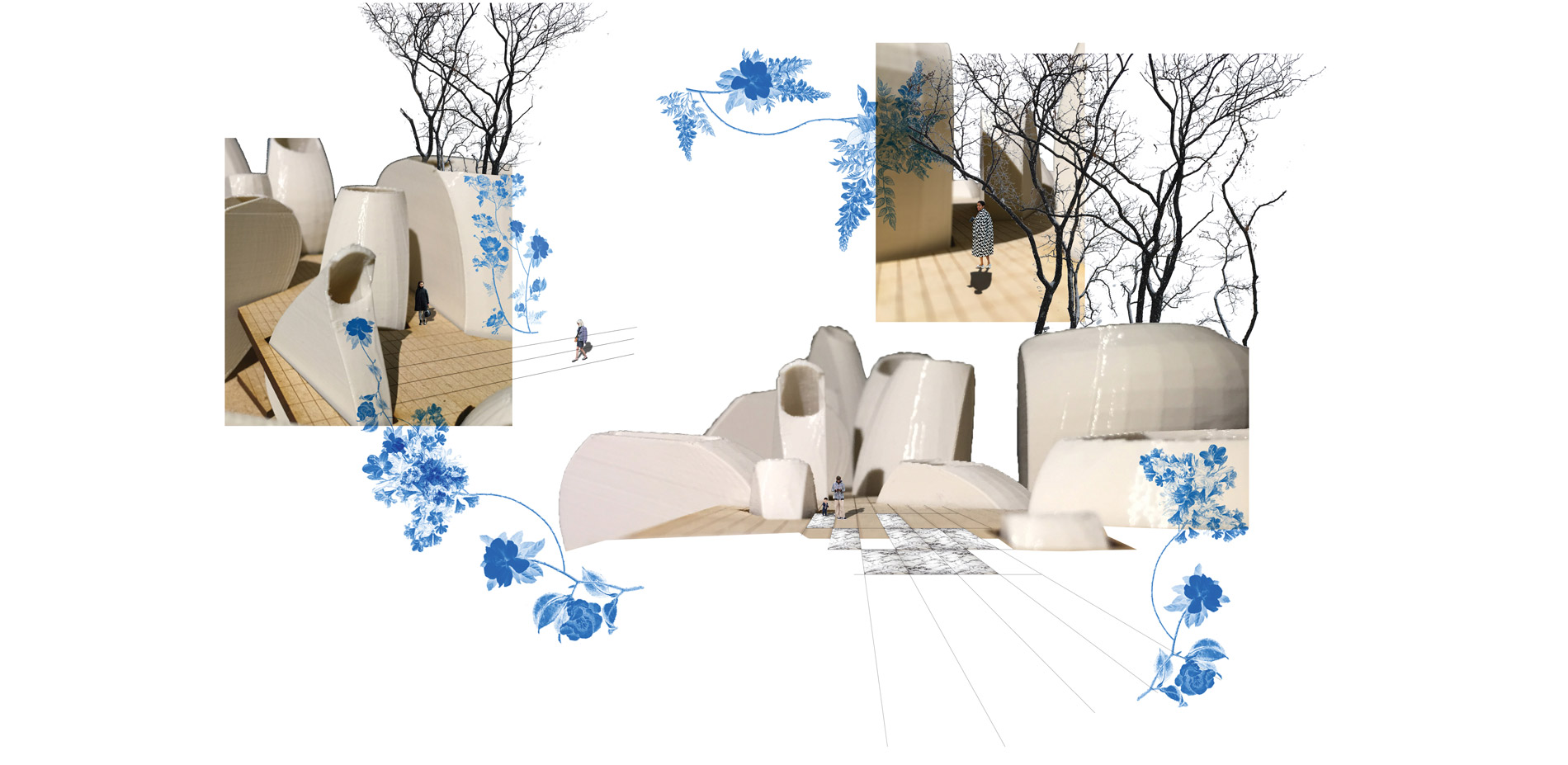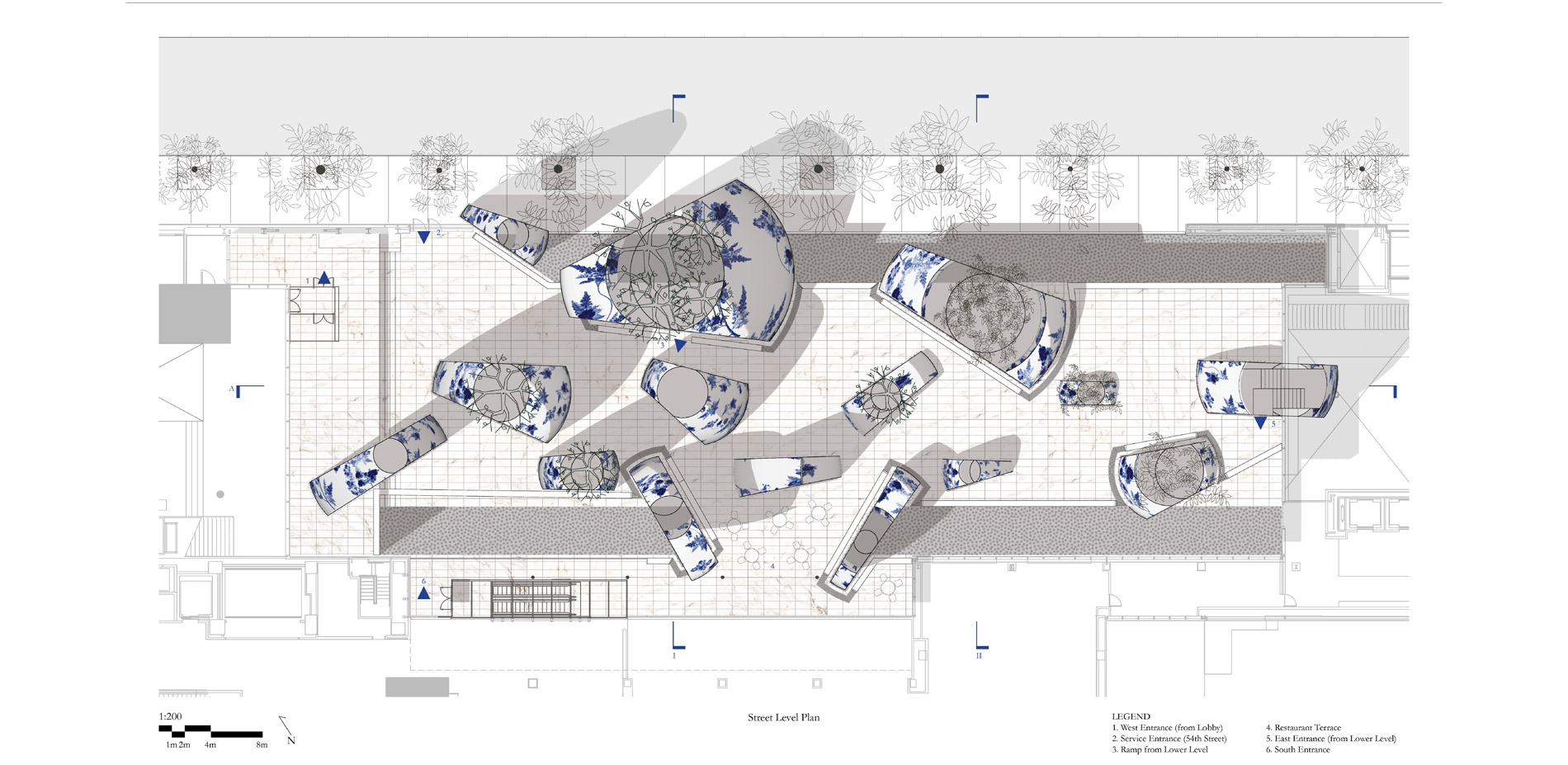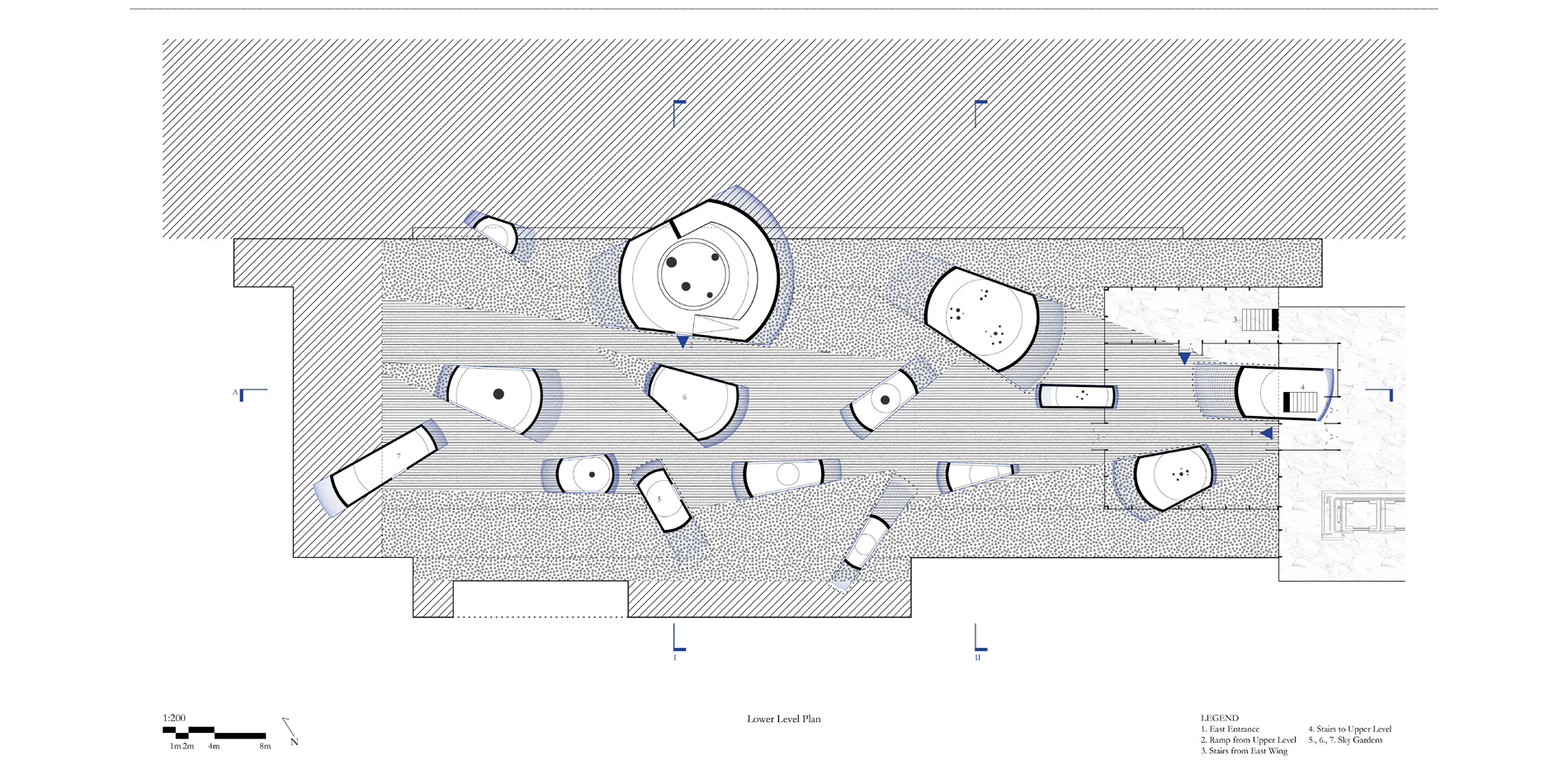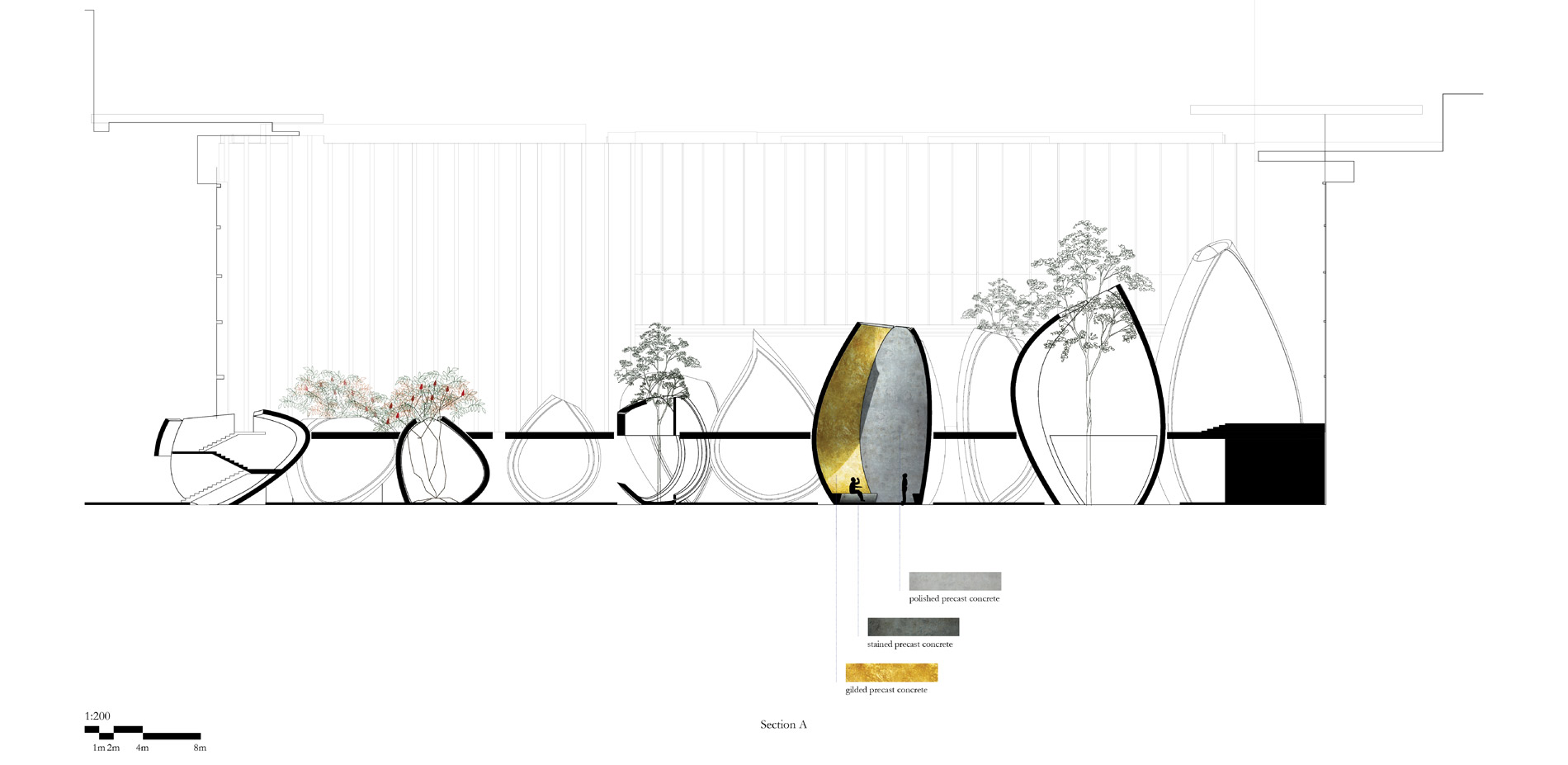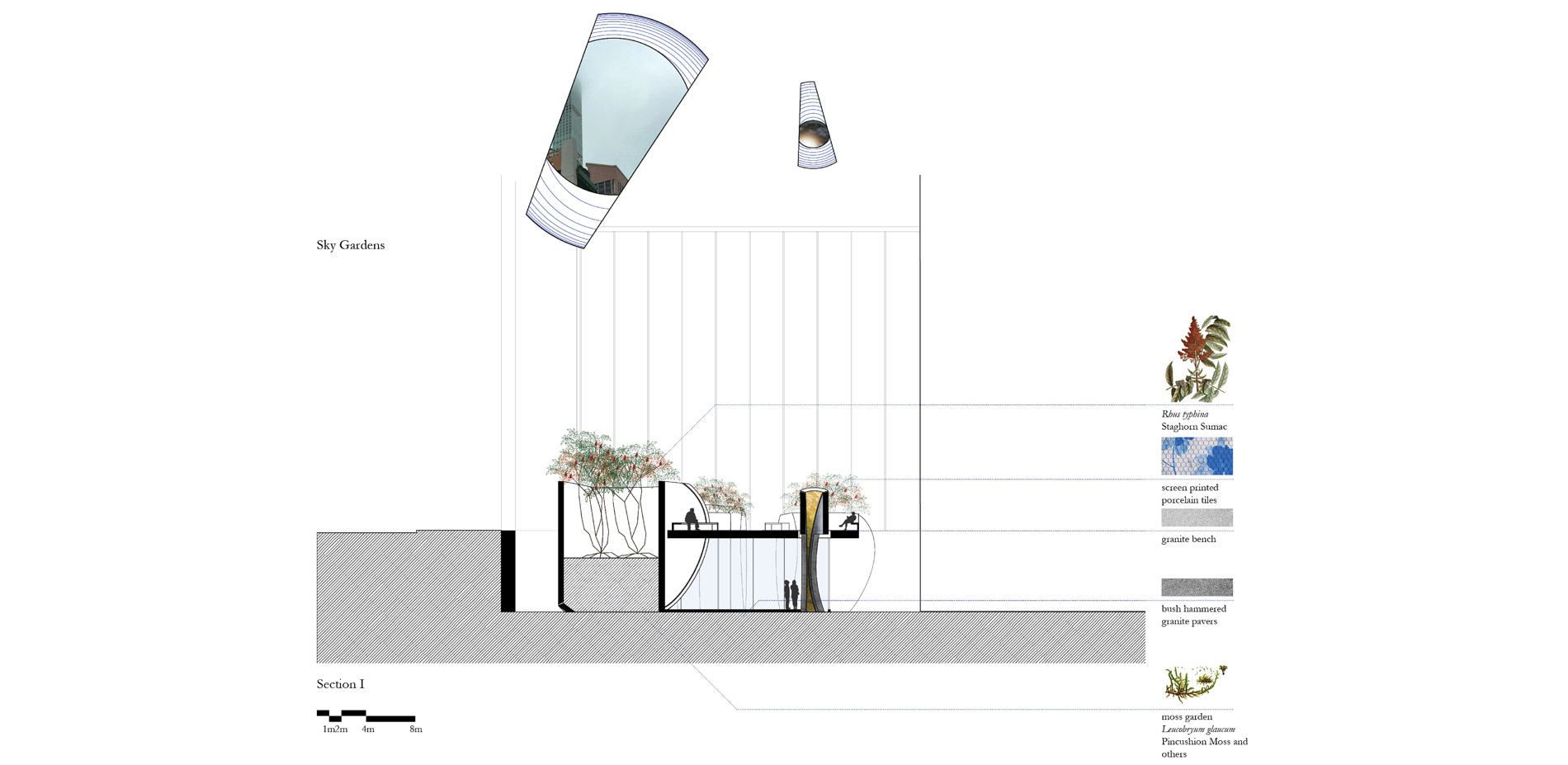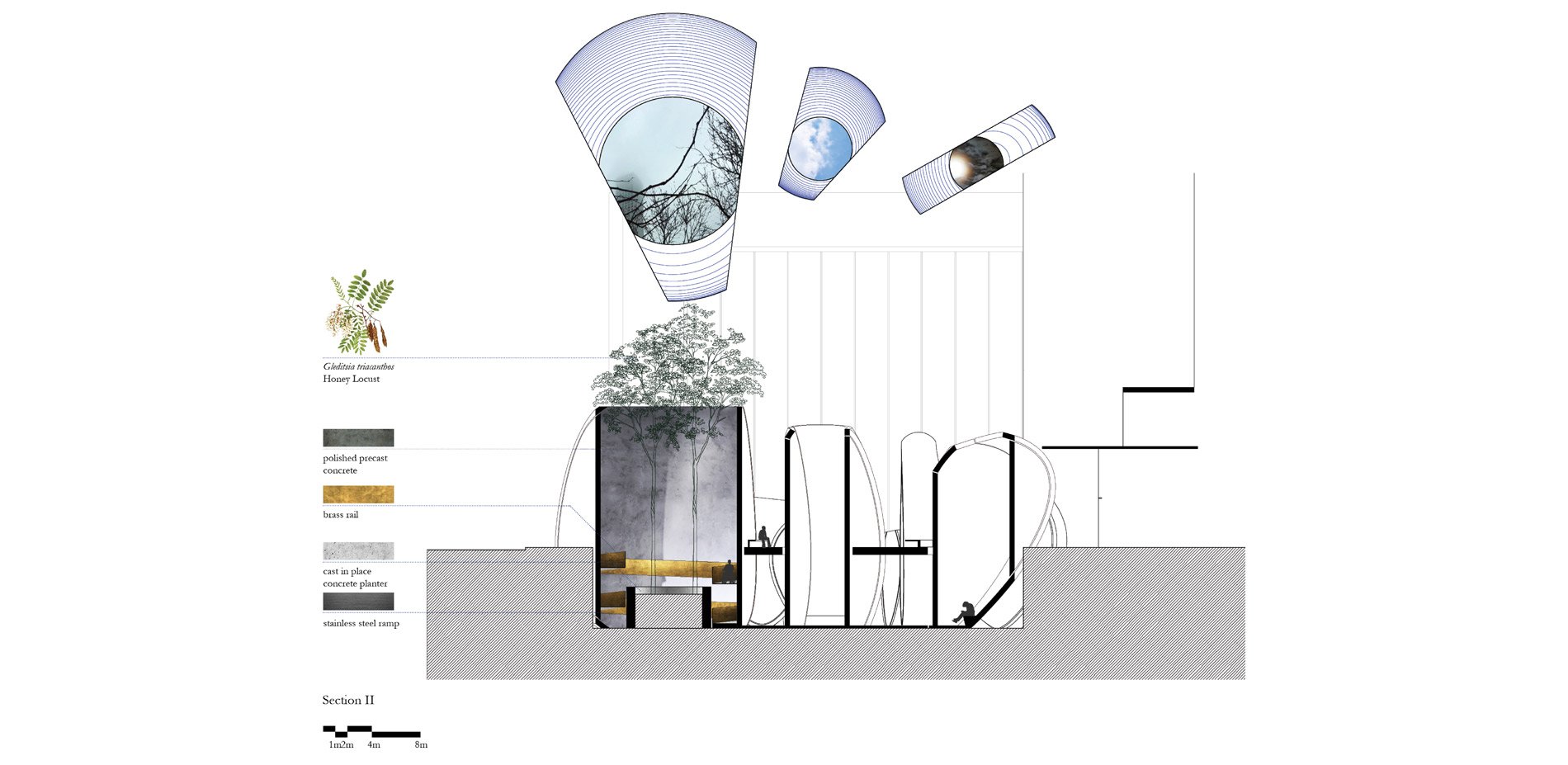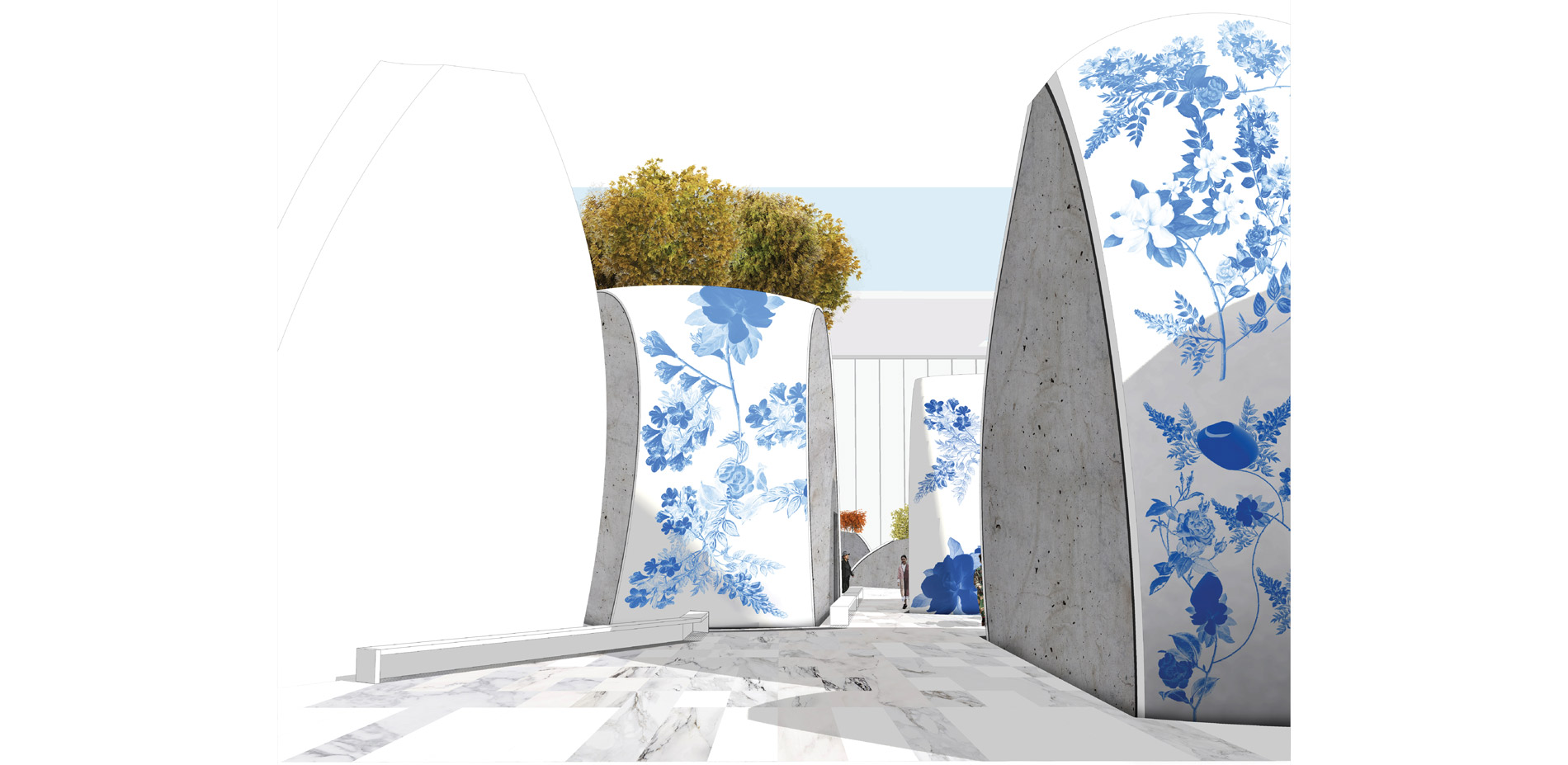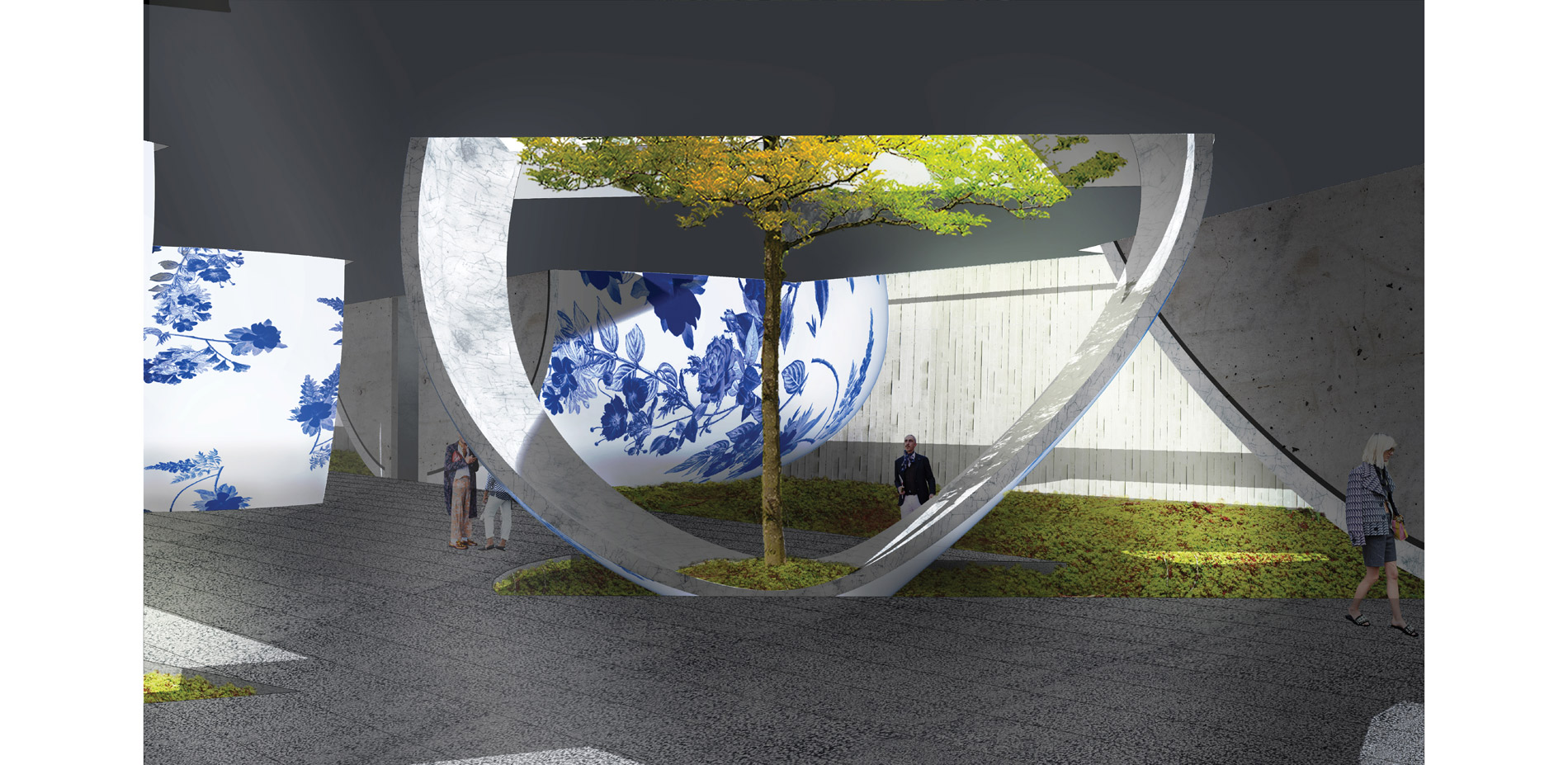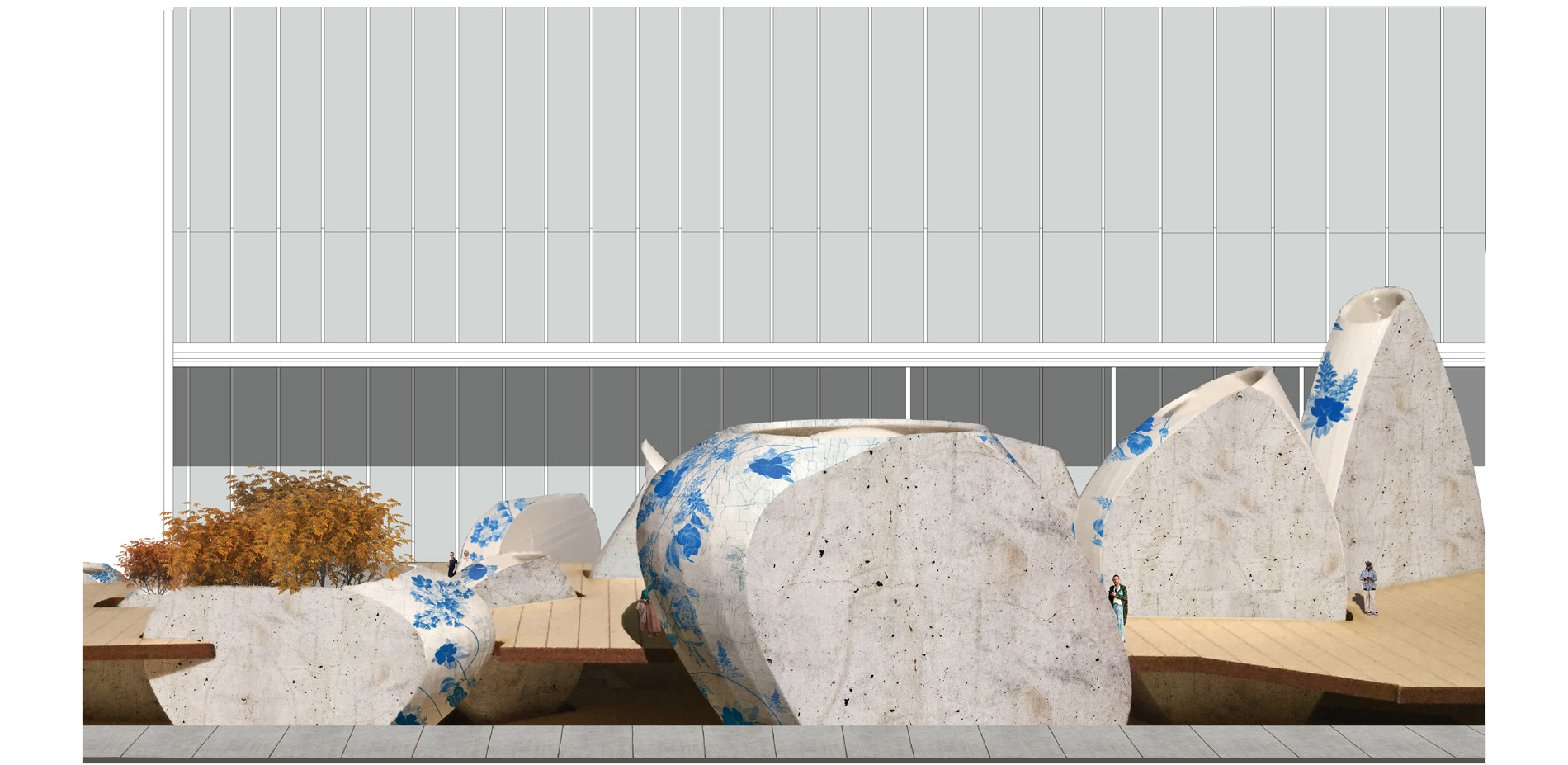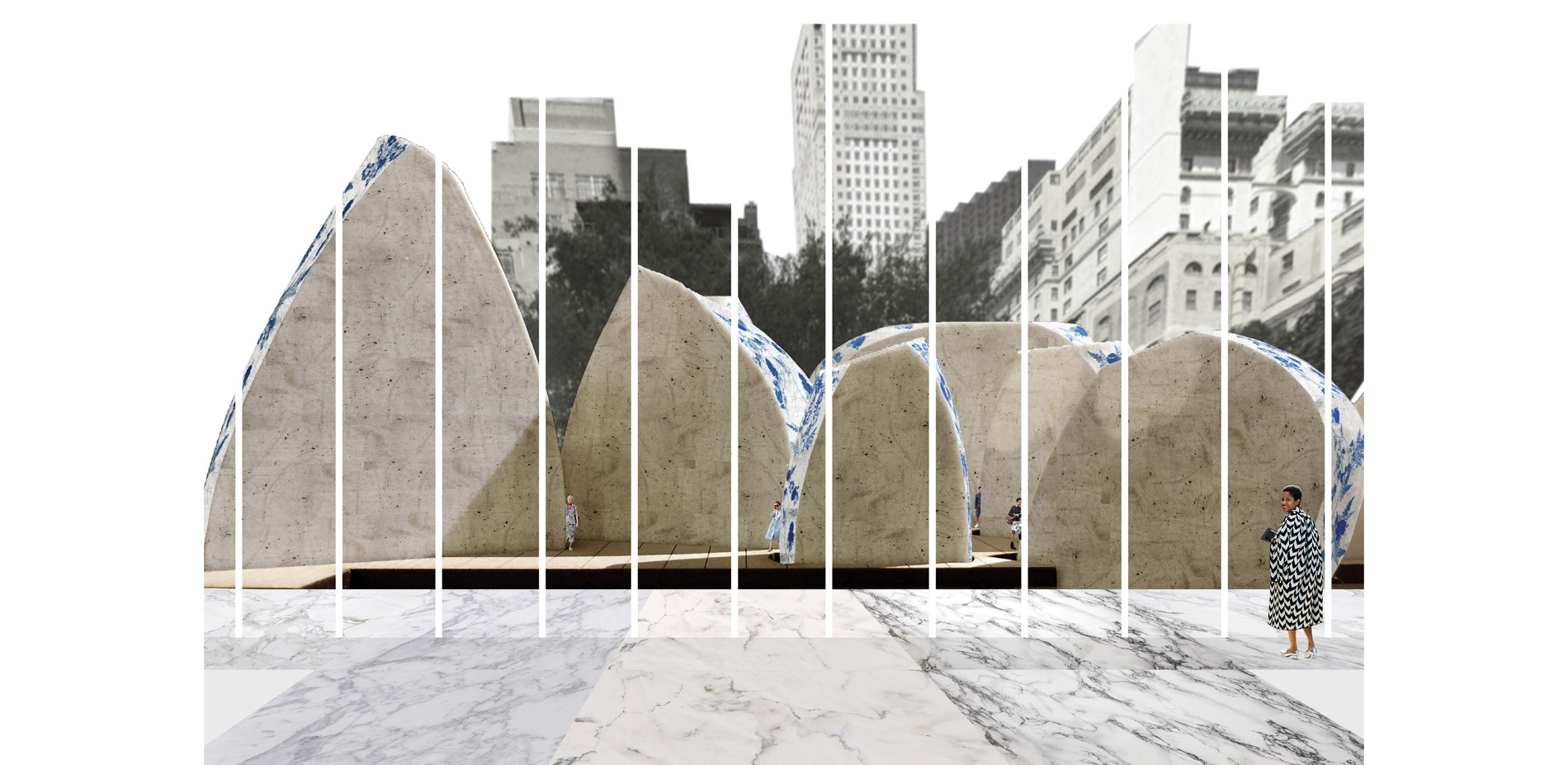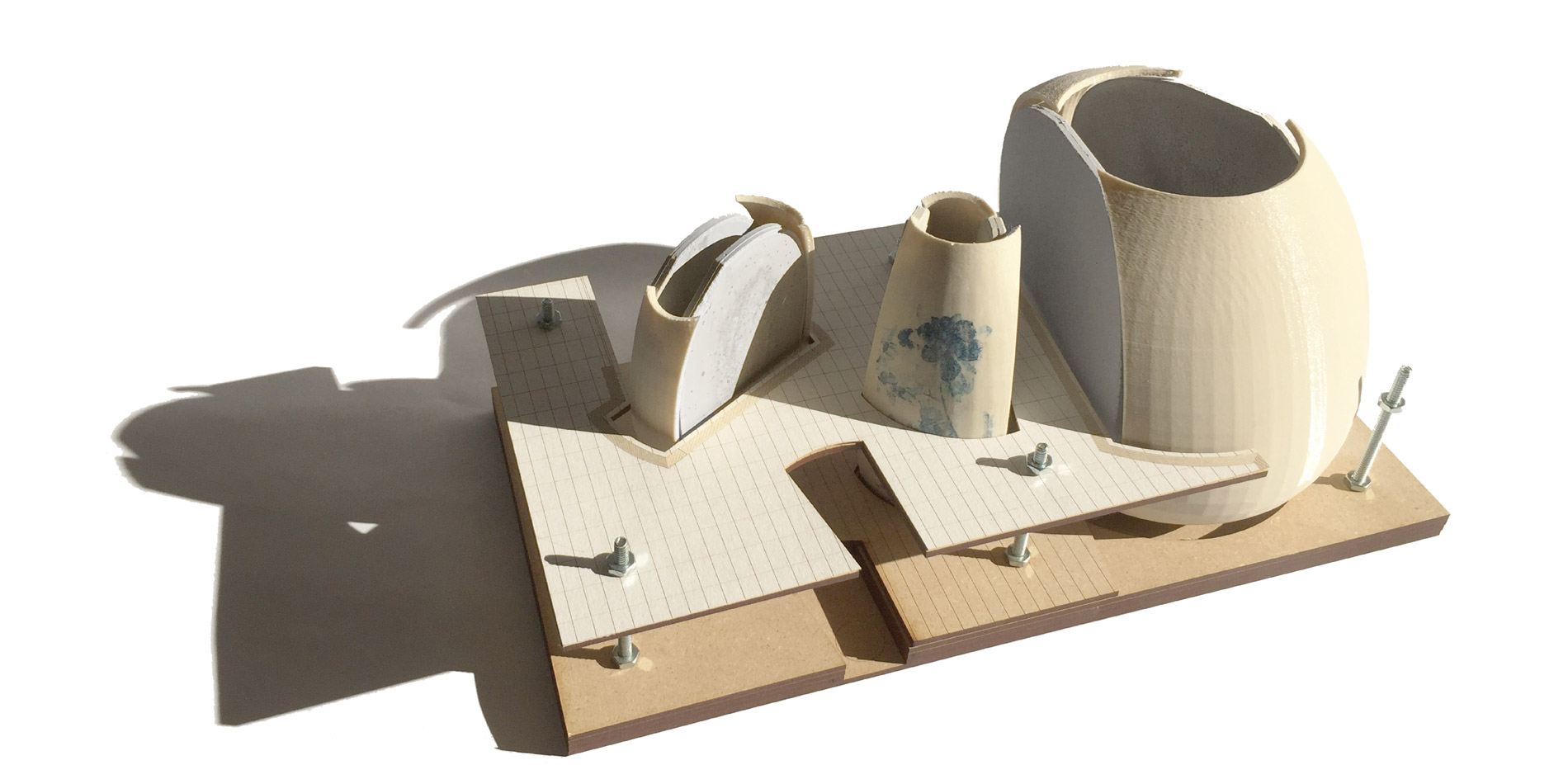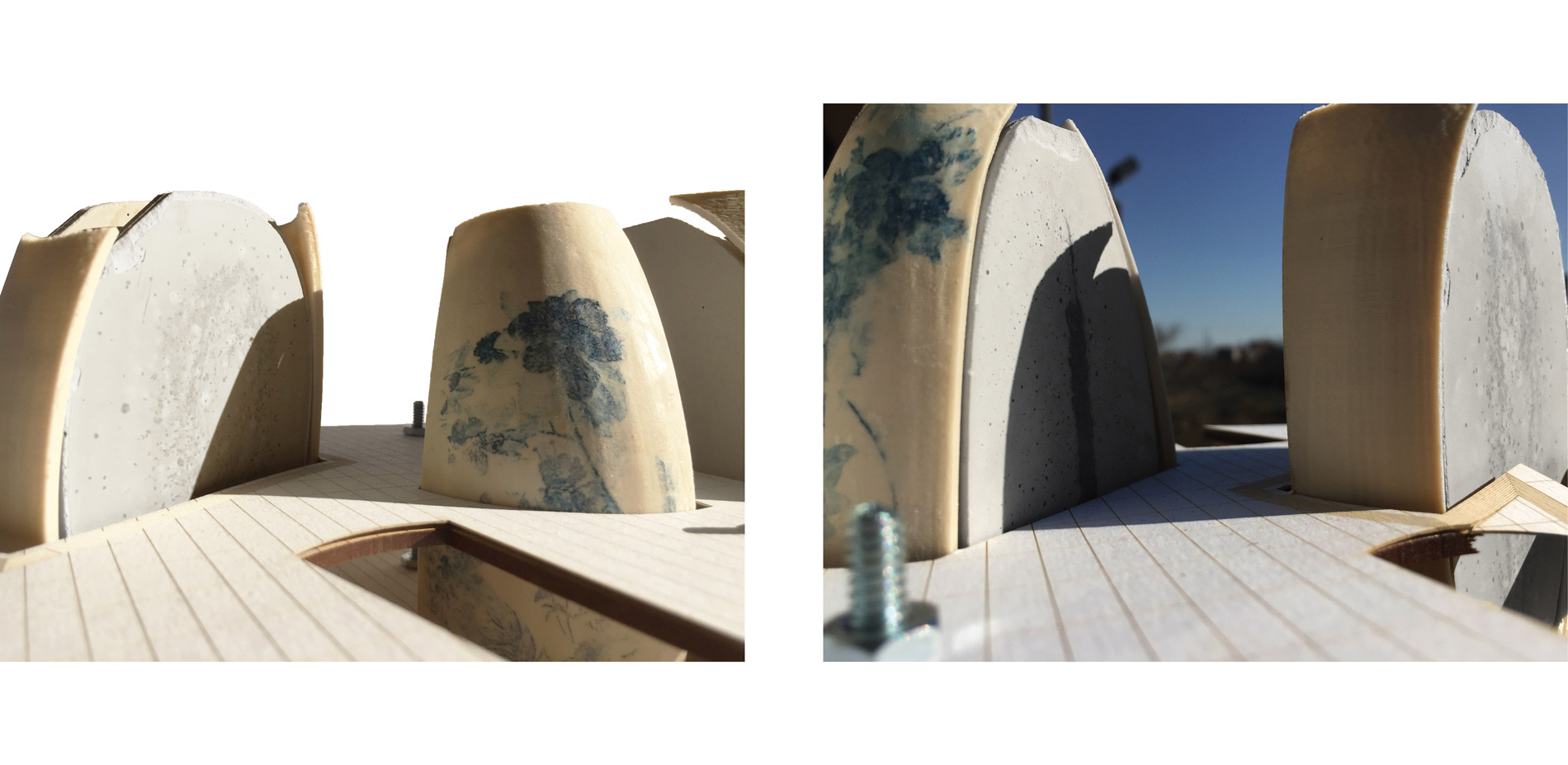Sharawadgi Garden: A New Understanding of Chinoiserie for a Chinese Garden at the MoMA
HONOR AWARD
General Design
Museum of Modern Art, New York, NY, USA | Douglas A. Breuer, Student ASLA | Faculty Advisors: Richard Weller, Valerio Morabito
University of Pennsylvania
So provocative on so many levels. Some beautiful materiality about the project. I think it’s totally transgressive both in that materiality and in terms of its contextual juxtaposition of cultural domestic elements in the MoMA garden.
- 2018 Awards Jury
PROJECT STATEMENT
Sharawadgi Garden wrestles with the challenge of designing a contemporary hybrid Chinese and Western garden for the MoMA courtyard space, currently occupied by Philip Johnson's Modernist sculpture garden.
Beginning with Marco Polo's accounts of the 'exotic' and 'otherworldly' East, China has maintained an othered position in the Western fantasy. As imported Chinese luxury goods became more widespread in the West, Western artisans and designers began to produce their own goods designed in a "Chinese" style, but in fact created an entirely new style born out of the Western imagination.
In a contemporary setting, acknowledging the impossibility of designing a Chinese garden in the spatiotemporal context of New York, this garden hybridizes the West and the East by exploring a contemporary Chinoiserie. Scale, planting, organization, and fine craft blur the reading of the garden between Chinese and Western, appropriate and appropriated.
Chinoiserie allows the garden to escape any sort of Chinese 'authenticity' (which would be an impossible feat) and becomes a new spatial and aesthetic experience of the West.
PROJECT NARRATIVE
Location
Sharawadgi Garden is located in the Museum of Modern Art courtyard. It replaces the current MoMA sculpture garden (its current incarnation designed by Philip Johnson and maintained by Zion Breen Richardson Associates). The site is at once intimate and rarified, yet in a museum with annual visitors approaching three million.
The garden's footprint is approximately a half acre but the Sharawadgi Garden excavates a sunken garden beneath the current garden creating an upper level accessed from the main MoMA lobby in the David and Peggy Rockefeller Building and the MoMA restaurant and a lower level accessed from the lower level of the Lewis B. and Dorothy Cullman Education and Research Building.
Site and Context
The site for the garden is at once physical and conceptual. Situated in a Modernist museum celebrating Modern art, the garden's context is anything but neutral.
The research phase of the studio focused on developing an understanding of Chinoiserie as it originally emerged in the 17th and 18th Centuries and a contemporary refiguring of the design and aesthetic movement. As trade with the East developed in the 17th Century, demand for imported luxury goods soared and the West became obsessed with the East. Western artisans and designers began to experiment with the creation of a new aesthetic – that of Chinoiserie - to fulfill the fantasies and consumptive demands of Europeans. Chinoiserie emerged as a Western aesthetic that was a constructed fantasy of an exotic other. Appropriating, exaggerating, fanaticizing, and making up, artisans and designers were prolific in the their fantasizing and Chinoiserie became an aesthetic and design movement that operated in the decorative arts, fine arts, design, and architecture and landscape architecture.
New Chinoiserie prints serve as a generative device. Hybridizing six plants imported from Asia to Europe in the 17th and 18th Century (plants that are now commonplace in Europe), these prints are at once fantastical and nonsensical and speak to both the aesthetic of Chinoiserie while signifying the botanical appropriation from the East by the West.
Design
The garden is designed as a series of different spaces for gathering, circulating, contemplating, and relaxing. Given the garden's context – within the MoMA, at times it offers a respite from the stimulation of the museum and at other times stimulation of its own.
The upper garden is designed as a space for communal experience or solo contemplation. It is composed of marble platforms (recycling the current courtyard's stone) punctuated by giant vases descending in height from the western (lobby) side to the east (education center) side. On this level, visitors can ambulate through the space, moving between the vases and finding themselves in narrow points that frame views back to the museum or toward other vases or more open spaces, where they can gather. The vases comprise an integral part of the experience. Their voluptuous curves are broken by two concrete shear walls. The curved surfaces are covered in ceramic tiles printed in blue with the newly designed Chinoiserie prints. A series of lines and curves forms guardrails, drains and benches and offer moments to sit and contemplate on the garden, museum, or simply relax. As well, the restaurant spills onto a terrace that is pocketed by the vases. On the upper level, the living plant matter of the garden pokes out of some of the vases. Rhus typhina (Staghorn Sumac) provides a foliage with a choreography of colors from greens to browns and reds that contrast with the whites and blues of the marble and ceramic. Gleditsia triacanthos(Honey Locust) rises out of the taller vases and, depending on the season, create a delicate web of skeletal branches or green and yellow canopies that read simultaneously like urban foliage or giant cut flowers sitting in vases.
The lower garden is a space intended for smaller groups or individual experience. A floor paved in bush-hammered granite provides a substrate for visitor occupation and moss covers the rest of the ground. Light comes at the edges and through voids between the vases and the floor above giving the garden a darker, more contemplative quality. Here, some of the vases are completely open on the shear sides to reveal their vegetative occupants. Other vases contain sky gardens – intimate spaces with benches and views to the sky, skyline and vegetated canopy of the garden.
Arrayed with an artful disorder (a translation of the term sharawadgi), the vases punctuate the space of the garden and invite the visitor to spontaneous encounters, to wander, to discover, to contemplate, and to relax.
